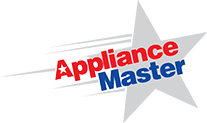Being kind to your dishwasher means it will work better and last longer than if it was neglected.
Just like you give your car regular oil changes and you replace the filters in your Central AC, a few minor maintenance tasks will have a long-lasting impact.
1. Check the filter.
Every dishwasher has a filter to keep larger particles from clogging the pump and spray arms. Even though you’re diligently scraping your plates (see our previous part 1 newsletter), there is still greasy and protein-based gunk that can build up. Your manufacturer has information about how to do this. Basically, you need to remove filter, run it through some hot water until its clean, then reinstall.
2. Check the spray arm.
This is what powers the cleaning of your dishes. If the spray arm is clogged, less water sprays on your dishes. Your manufacturer has information about how to clean the spray arm. Basically, you need to remove it, use a toothpick or something like it to clean the holes, then run it through some hot water until it’s clean, and reinstall.
3. Check your hot water temperature going into the dishwasher.
The water line usually comes from the kitchen sink. How long does it take to get hot water when you turn the faucet on? In Part 1, we said that a faucet lets out 2.2 gallons of water a minute. If your dishwasher uses that much water for its entire cycle, shouldn’t you be sure the water is hot? Many dishwasher models have their own built-in water heater to overcome the issue. Check yours and, if it doesn’t, make sure you run hot water in your sink before you start the dishwasher.
BONUS
Our technicians have found that working on dishwasher can be among the most complicated service issues they face. They are forced to diagnose and assess installations that are not friendly for servicing the appliance.
For example,
Can the dishwasher be pulled forward for service?
- Was the floor installed After the dishwasher? Now that dishwasher is blocked in from the bottom.
- Does the countertop rest ON TOP OF the dishwasher or are there cabinetry panels supporting the countertop on both sides of the unit? If not, the dishwasher is hemmed in from top.
Is there access to the water lines that supply the dishwasher underneath the sink or some other access point? Is there a shut-off to the dishwasher? How will you stop water flowing into the dishwasher if there’s a problem?
Minor leaks involving a dishwasher may never be seen until there’s a BIG problem, like a flood in your kitchen or a waterfall in your basement.
Plumbers and cabinet installers have limited focus when it comes to dishwashers. The concept of SERVICING a dishwasher isn’t really on their minds.
Appliance Master can help you assess the health of your dishwasher’s “home” and provide you with suggestions on preventing common problems.








Add comment